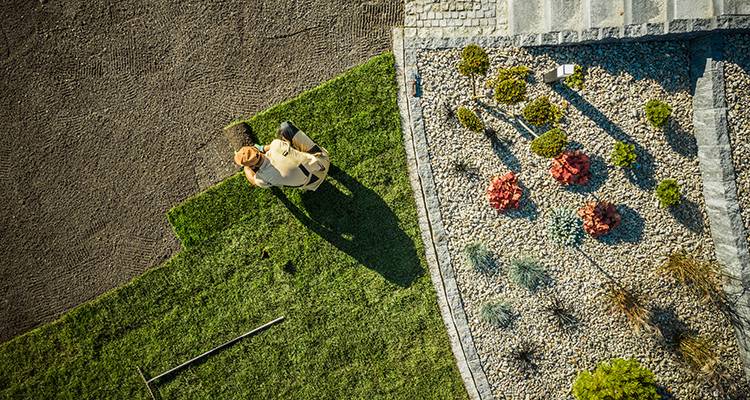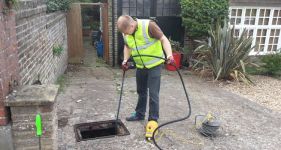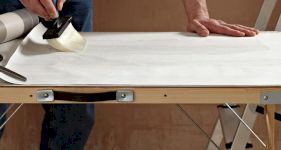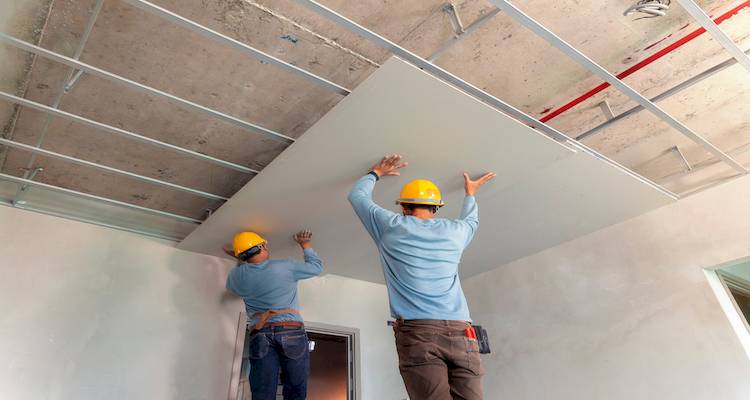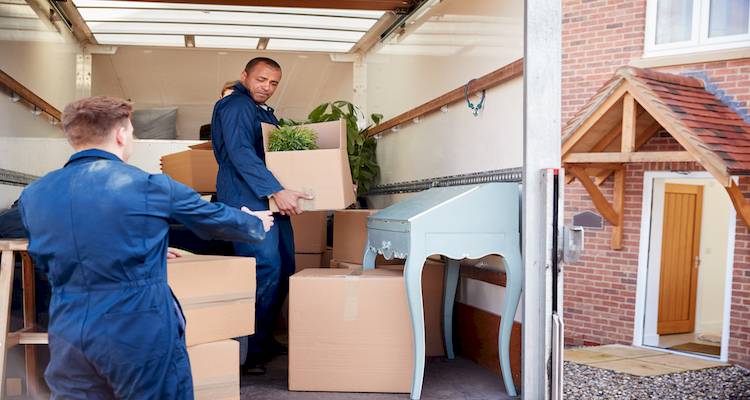Cost of Laying Turf
- The average cost of laying garden turf per m² is about £15.
- The job will usually take between 3 days to complete for a 100m² garden.
- A complete breakdown of turf costs, including the different types of turf available.
- How long turf installation takes, the installation steps, as well as the best time to lay turf in the UK.
- How to find and hire turf layers near you.
Want to find out lawn turf cost per m²?
The cost of laying turf can vary depending on what type of turf grass you choose, how large your garden is, and where your home is within the country.
To give you a rough idea, in terms of laying turf per m², it will typically cost around £15 per m².
Already got your plans set and just want a quote from a local turf layer?
MyJobQuote has a range of turf layers near you, ready to give you a free, no obligation quote!
Prefer to learn more about turf prices first?
Carry on reading below:
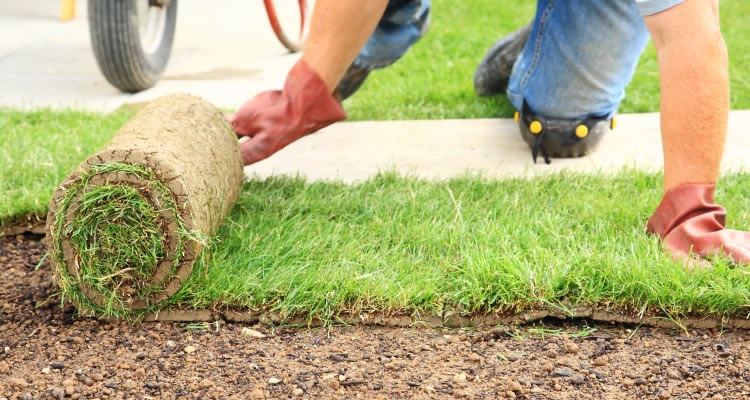
£15
Table of Contents
How Much to Turf a Garden?
Looking for turf prices?
If you’re looking to turf your garden and want to work out a rough budget, there are several variables you’ll need to consider.
To turf a small 50m² garden, you're looking at prices between £120 to £1,250.
The larger the area, the higher the cost, so medium gardens of 250m² can cost anywhere between £600 to £6,250, depending on the type of turf you choose.
Large gardens of 450m² can cost between £1,080 to £11,250.
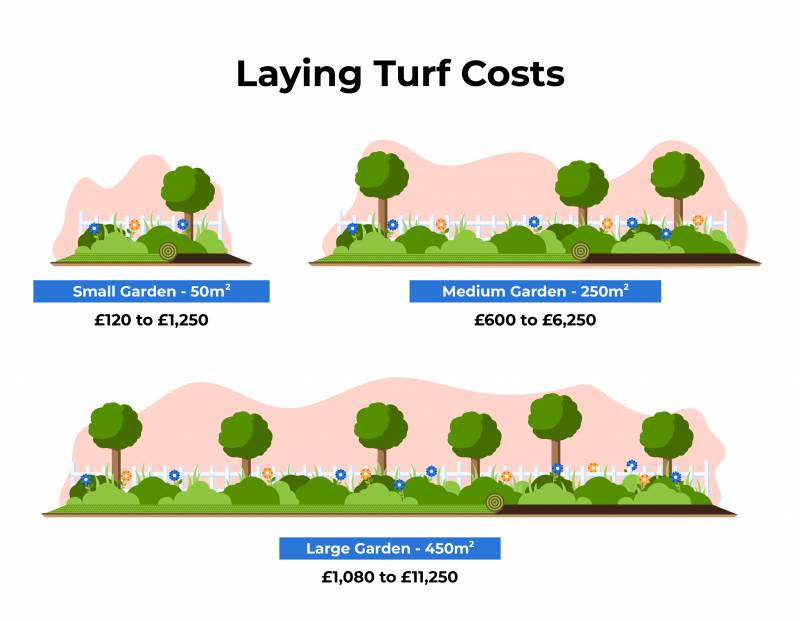
To find out how much turf you need, you'll need to know how big the area is that you want to turf. If your garden is an exact square, 10 x 10m, then you’ll need 100m² of turf.
But what about other sizes? Here's how to calculate the amount of turf you need:
- To calculate the area of a roughly square or rectangular garden, multiply the width in metres by the length in metres.
- To calculate the area of a triangle, you multiply the length of one side by the length of the distance to the point on the line perpendicular to it. Then, divide your answer by 2.
Most people will have a much more oddly shaped garden, and will want to add a few extra metres of turf in case of cutting mistakes and mismeasurements. If your garden is hard to measure, you’re better over-guessing quantities than under.
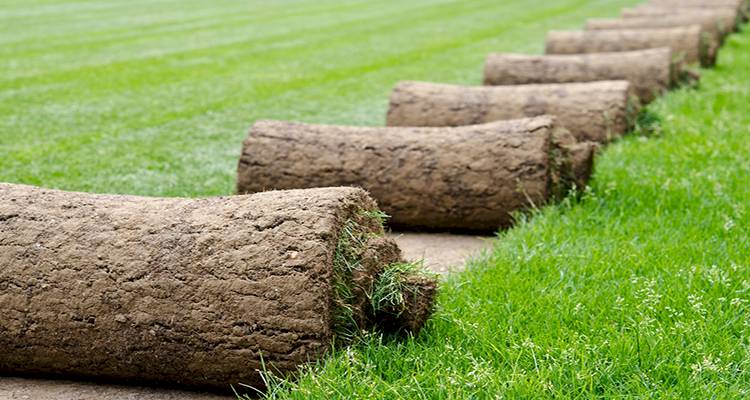
The type of turf you choose will affect your overall turf installation costs, which we'll cover in the next section. The location of your property shouldn’t affect how much you pay for turf, as many of the best types of turf are available online with standard delivery rates. However, in some locations, you may be able to get a different type and pay a different price at a local garden centre or DIY store.
Lastly, you will pay different prices for your contractors, but £150 to £200 per day is a good average to work from.
Do you always need to add topsoil when laying new turf down? Or is it only when you need to level out the area?
Garden Turf Prices
Lawn turf prices will make an enormous difference to your overall turf installation costs. Here's what you can expect to pay:
| Garden Size | Budget turf (£2.40 p/m²) | Average turf (£3.50 p/m²) | Luxury turf (£4.70 p/m²) | Meadow turf (£25 p/m²) |
|---|---|---|---|---|
| Small garden – 50m² | £120 | £175 | £235 | £1,250 |
| Medium garden – 250m² | £600 | £875 | £1,175 | £6,250 |
| Large garden – 450m² | £1,080 | £1,575 | £2,115 | £11,250 |
You can expect to pay anywhere between £2.40 to £6.90 per m² for budget, average, or luxury turf. This means that 100m² will cost you between £240 and £690.
The difference in cost is due to the composition of the grass – and the composition you choose will depend on your requirements. A hardwearing turf is a great choice for gardens with rough and tumble children, energetic dogs and sporty families.
However, someone who wants the beauty of a perfect lawn will want a more luxurious composition. A good quality grass will be a blend of meadow grass, fescue grass and ryegrass.
You can also get meadow turf, which is full of natural wild seed. If you wish to incorporate this into your garden, you can expect to pay about £25 per m².
How Much Does Turf Installation Cost?
Now, let's take a look at labour costs and timescales.
You can expect to pay between £150 to £200 per day for turf laying specialists.
Laying the turf itself is the shortest part of the job – your main time is going to be spent preparing the soil. This preparation will include removing any existing surface, digging down to a suitable level, preparing the existing soil and adding topsoil or soil improver before laying the turf.
Many turf specialists recommend you actually leave it for up to 6 weeks for the soil to settle between doing the preparation and laying the turf.
Depending on the depth you dig down, the quality of your soil (and whether you need to add fresh, topsoil or soil improver), how much you need to rotavate or rake, and how long you leave the soil to settle before laying the turf, as well as your ground area, you could be looking at huge variances in your labour time and costs.
As a very rough guide, you should allow around 60 minutes per m² (without including time for the soil to settle, which could add up to 6 weeks to your project time) to prepare your soil adequately (note: this is by hand, not using a digger).
With all the soil preparation already done and with everything in place, a single contractor can lay around 100m² turf per day. This means you’re looking at a rough time of 65 minutes per m², or 100m² in just around a week.
In terms of labour, a professional turf layer will charge a higher rate for their services, but you will get the most knowledgeable people who will likely have encountered every scenario, meaning your particular garden should be within their skillset.
Alternatively, you can go with a general landscape gardener, who will also have extensive knowledge of soil types, turf properties, ground issues etc. An added bonus of a landscape gardener is that they may be able to offer advice on better ways of laying out your turf area to complement your garden.
Finally, you can hire a trainee labourer, who will come at a lower cost, but with lower experience.
| Labourer Type | Knowledge of Turf / Turf-laying | Complementary Knowledge | Cost per day |
|---|---|---|---|
| Specialist Turf-layer | High | Medium | £150 - £200 |
| Landscape Gardener | Medium-High | Medium-High | £110 - £180 |
| Trainee Labourer | Medium – Low | Medium – Low | £75 - £100 |
How Much Is Turf?
Let's take a look at supply costs alone now:
There are two costs to bear in mind when purchasing turf: the price of the turf itself, and the cost of delivery. In respect of delivery, there really isn’t an average you can work from. It absolutely depends on the quantity and the retailer.
If you’re buying in person from a standard DIY/garden shop, you will have no delivery charges, though there are logistical complications if you have a large garden and require a large quantity of turf. Buying individual pieces of turf from a shop does work out cheaper, though, if you’re only getting a small amount.
Just bear in mind that the turf will dry out the longer it’s on display, so ask your retailer when their turf deliveries arrive and aim to collect yours on the same day.
If you’re buying from an online DIY/garden retailer, there is often a minimum order amount and a £20 to £30 delivery fee, so this doesn’t make financial sense for small quantities of turf.
An alternative would be an online turf specialist – they will deliver the turf to you as fresh as possible (often cut to order and with quick delivery) and will have a range of turf types.
Many have a minimum order quantity, but this can be as low as 10m². With this method, there will usually be a per m² delivery charge, of £1 to £2.50, with the lower delivery charge being applied to higher quantities of turf.
The second factor to consider is the turf type. There are lots of varieties of grass, and they are grown in combination with each other to create different textures and looks. However, these broadly fit into two categories.
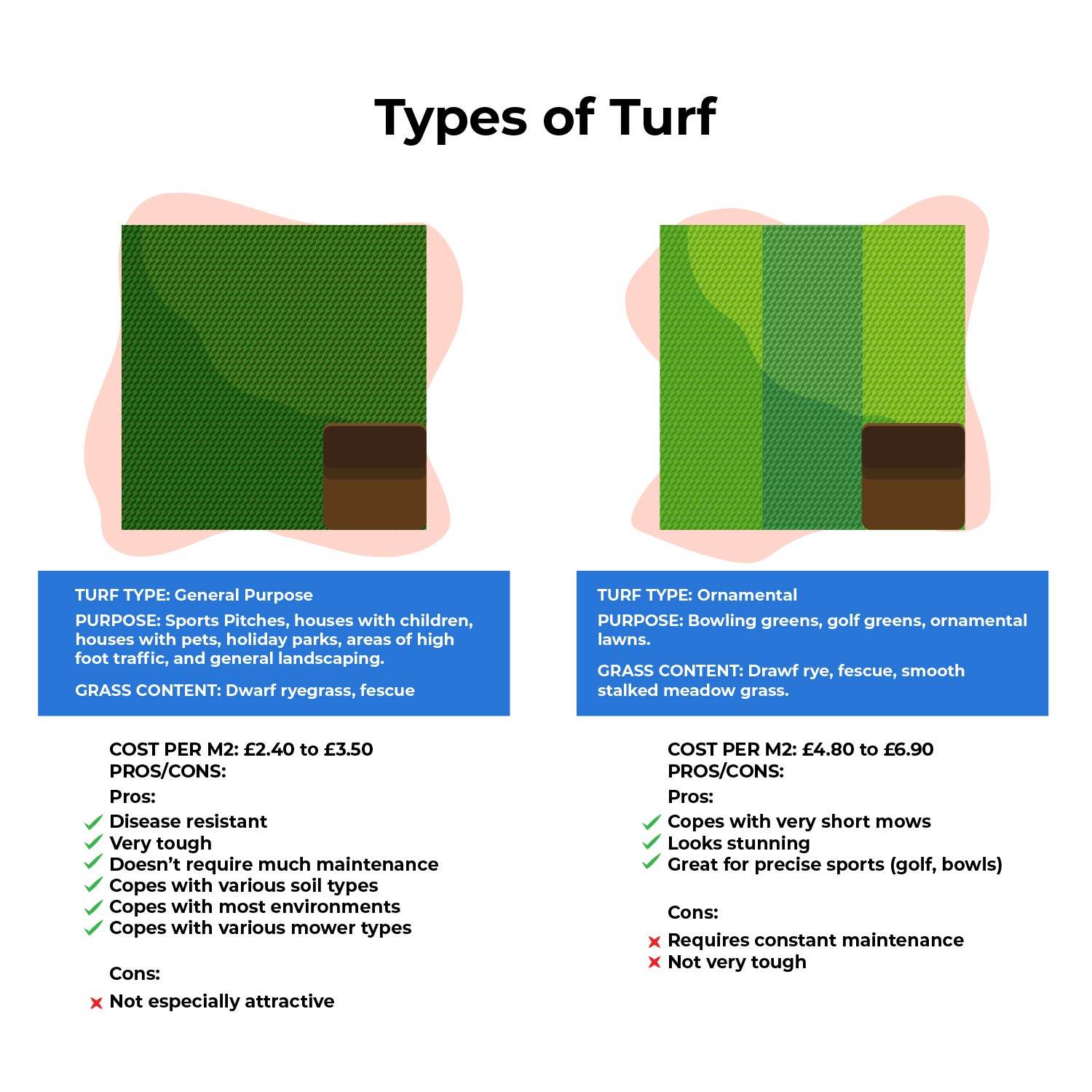
You should bear in mind when you buy turf that it should come from a reputable seller who works to the Turf Growers Association standard (TGA).
What Impacts the Cost of Laying Turf?
While you might suppose cost is just about the turf, it isn’t. The real cost of a fresh lawn comes down to the work that goes in around it. Here are the main ones:
Garden Size
If you have a larger lawn, this will involve more rolls and more prep, not to mention more time. In fact, a 1,000m² garden can cost many times more than a 50m² patch. And this is mainly because of the volume of turf and labour involved.
Type and Quality of Turf
Your cheapest option? Basic hardwearing turf. At the other end of the scale is ornamental or fine turf for a showpiece lawn. For this, you’ll likely fork out around £2.40 per m² for standard turf. But for premium grades, this will cost nearer to £6.90 per m².
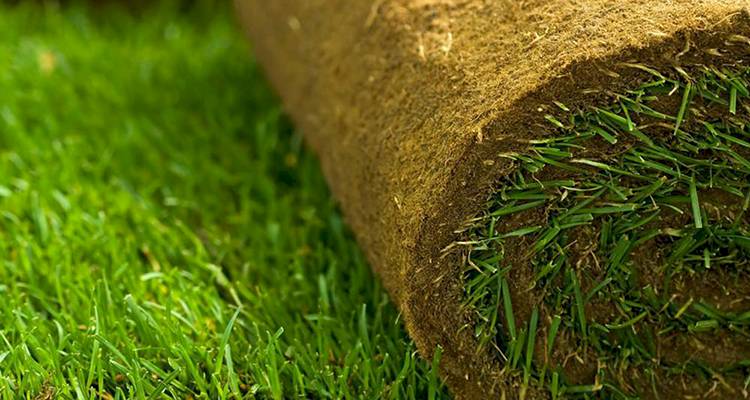
Ground Preparation
Poor soil? Before the turf goes down, you’ll possibly need topsoil. For good-quality topsoil, chances are, you’ll be paying somewhere near £45–£135 per m³. Removing old turf or rubble? This adds more time, and sometimes it’s easier to hire a small digger – prices usually come in at about £200 for the first day and £50–£75 for each extra day.
Labour
A lot of landscapers will quote you by the day – generally, you’re looking at £100–£400 for a day’s work. Some prefer to set an hourly rate, usually anything from roughly £15 through to £50. Price normally hinges on two things – where you’re based and how seasoned they are. As a rough idea, a good gardener can usually turf around 30-35m² a day. But if your garden is particularly large, the time (and cost) can very rapidly add up.
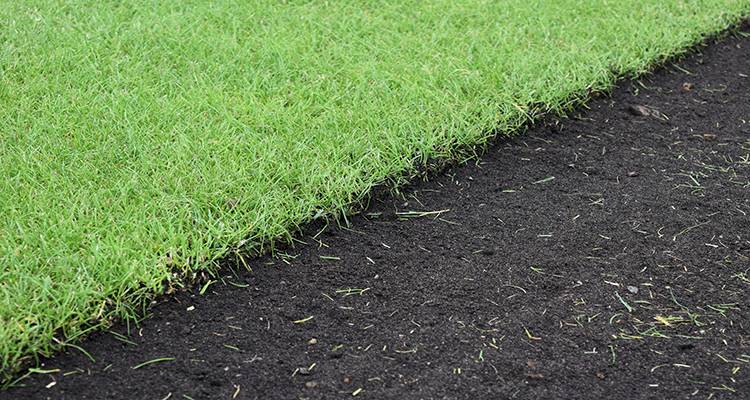
Access and Location
The easier the job is to get to, the cheaper it tends to be. Getting to the site makes a phenomenal difference. Slopes, steps, or skinny passages can hold things up and call for extra labour. And don’t forget location. Typically, London and the South East are steeper than other parts of the UK.
Extras
A couple of little extras can tiptoe onto the list. Examples include:
- Neatening up brick borders or edges
- Light corrections to guttering or drainage
- Scaffold tower hire for safe access (often £300–£800)
You can’t really prepare enough. A clear, even garden makes life easy and keeps the price down. A garden that’s overgrown, uneven, or full of old concrete? That’s going to take more time and money.
| Garden Size | Quantity of turf | Type and quality of turf (cost per m²) | Total landscaper cost (approx.) | Total |
|---|---|---|---|---|
| Large | 1,000m² | £2,400 - £6,900 | £3,000 - £12,000 | £5,400 - £18,900 |
| Medium | 400m² | £960 - £2,760 | £1,200 - £4,850 | £2,160 - £7,610 |
| Small | 75m² | £180 - £518 | £300 - £1,200 | £480 - £1,718 |
I have a very small front garden. I would like it sorted out, as it's in a fairly bad shape, so I guess dug out and turned over with new turf. I was just quoted £560 - is this the average?
Alternatives to Turf
A lawn isn’t the option for all. If you don’t fancy the upkeep of it, then you may prefer a solid surface that needs less care. So, what are the alternatives?
Decking
Decking gives you a flat, usable space straight away. Timber and composite boards are the most common – wood needs treating now and then, while composite costs more up front but is easy to look after. Decking installation costs vary quite a bit, but mostly, it works out at about £25–£85 per m². The material you pick makes quite a bit of difference.
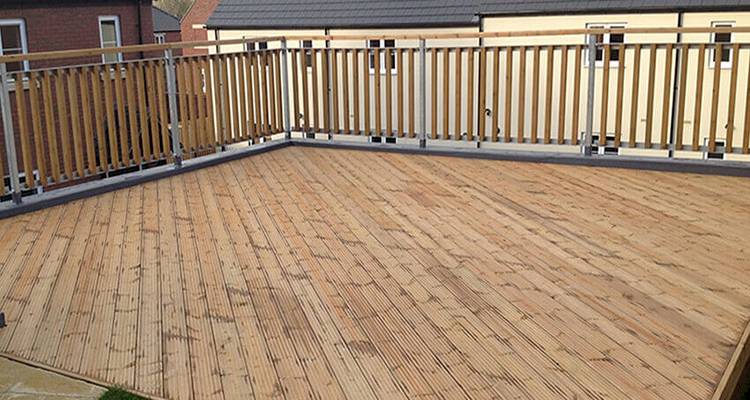
Artificial Grass
A lot more realistic-looking than the old plastic stuff you used to get, modern artificial grass comes in different lengths and qualities. You can go cheap and cheerful or splash out on a higher-grade turf that comes with a guarantee. Prices mostly sit around £10 to £27 per m².
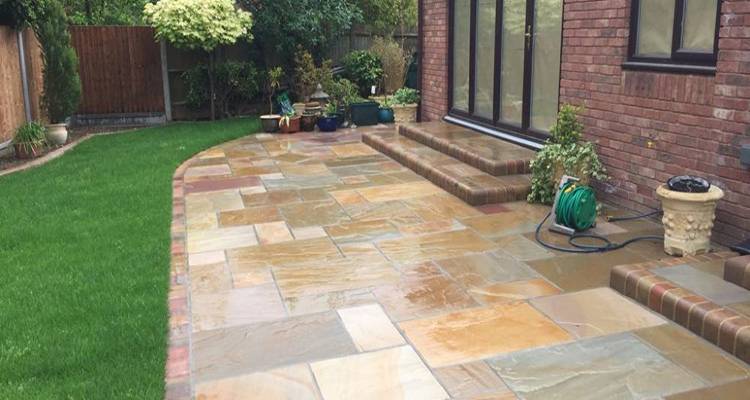
Patio
Patios don’t ask for much. At the cheaper end, basic concrete slabs come in at about £30 per m². Or treat yourself to stone or patterned paving at roughly £75 per m². Once laid well, it’ll last years with little more than the odd clean.
The average cost of a patio is between £900 and £2,500 for a standard-sized area (20m²).
Gravel, Slate or Bark
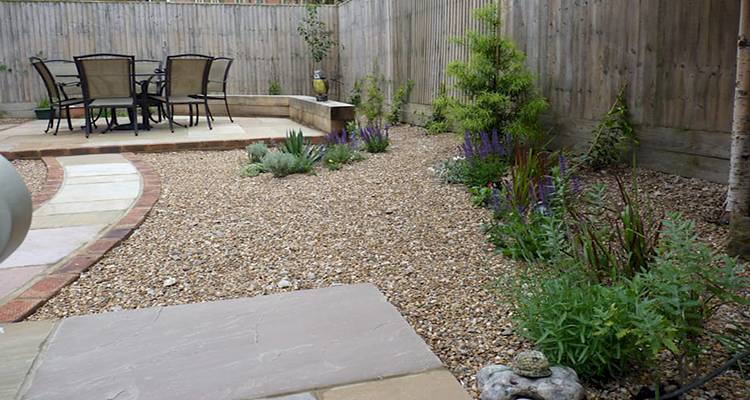
Seeking something easy on the eye and wallet? Then go for something a little looser – gravel, slate chippings or bark mulch. In fact, gravel starts at around £35 per m³ and bark from £40 per m³. For a cheap slate, you can nab it for £75 per m³. A weed membrane underneath helps keep things tidy.
How do I go about levelling a garden to have it paved and turfed?
Benefits of Laying Turf
- Great for resale – A smart real-grass lawn is a massive selling point and buyers with pets and kids will pay more for it.
- Somewhere to chill – a simple patch of grass that’s perfect for five minutes’ peace and a good read.
- Kind to the wallet – usually the most affordable option versus artificial grass, decking or paving, notably for wide spaces.
- Eco-friendly by nature – blades of grass trap tiny particles and give the air a gentle clean.
- Ready-made lawn – from bare soil to a proper garden in a day. Turf gives you instant coverage and a tidy finish.
- Install is effortless – easy to put in place. Give it a good base and look after it for the first few weeks and you’re sorted.
- Plenty of finishes – durable grass for daily use or richer, ornate turf if you want that manicured finish.
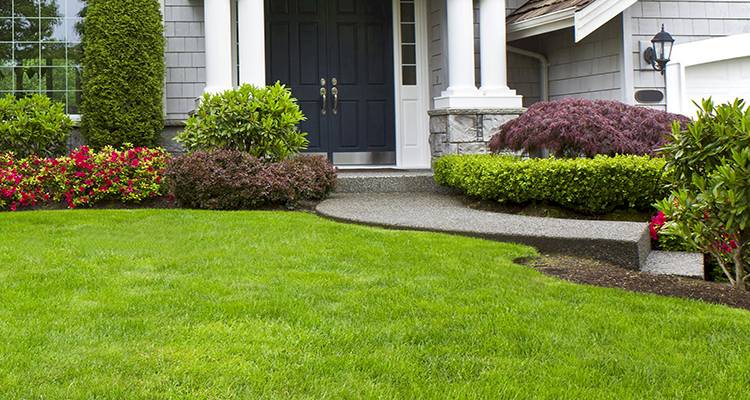
Can I Lay Turf Myself?
Yes, you can. That said, we don’t recommend it for most gardens. A neat, long-lasting lawn comes down to the prep — soil condition, levels, drainage, and compaction. That’s the bit DIY guides can’t judge for your plot.
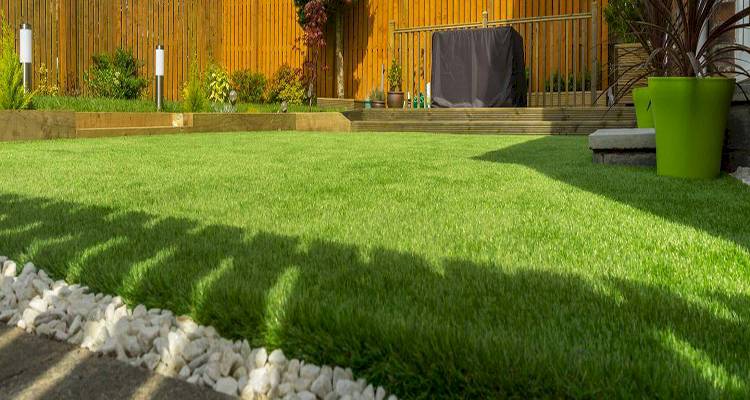
If the base isn’t sorted, problems crop up fast. Soon, you’ll see lumpy ground, water pooling where it shouldn’t, and turf that won’t root at the edges and never really bed in properly. And that’s before you stumble across buried rubble, tree roots or shallow pipes under the soil.
If you still want to have a go, keep it small and simple, and stick to basic, open areas. If your garden’s going to be a pain (slopes, tough soil, roots, or a lawn that takes a battering), you’ll save yourself some trouble by getting a specialist in.
Want it right first time round? Get quotes from local turf layers near you. You’ll get proper prep, faster laying, and advice on aftercare so it beds in well.
I had new turf laid in September and first cut it in November when it was about a foot high. Since then, it has become patchy, with areas where the grass appears pressed down and isn’t growing. How can I fix this, and what would it cost?
Checklist: Hiring a Garden Turf Installer in the UK
If you’ve decided that you’d rather leave the job to the professionals, there are a few things you should look into before you hire a landscaper or turf installer.
- Experience and past work – ask how long they’ve been laying turf and request photos of their past work. While there aren’t any qualifications needed to install turf, a good installer should have a portfolio. Also, you could ask previous customers to share what they thought about how well the job was done for them.
- Qualifications – do they have any linked qualifications, such as horticultural degrees or landscaping courses? While not directly about turf-laying, they give a lot of information and context about soil, grass, etc., which would give that individual a big advantage.
- All-in-one or extras? – is the quote including equipment, turf delivery, the skip and removal of waste, or will those be billed on top?
- Advice included? – check if they stick to laying grass or if they’re happy to advise on drainage, soil prep or wider garden work.
- Insurance – do they have public liability in place? If not, they won’t be protected against accidents or damage while they’re working.
- Guarantees – ask if they’ll guarantee the turf or the workmanship. And don’t be afraid of getting proof in writing.
- References and reviews – be sure to ask for references, or have a quick dig online at online reviews. This will give you a bit of an insight into how reliable they are.
- Quote in writing – their quote must spell out what’s being done, how long it’ll take, and precisely what you’ll pay.
FAQs
What Is the Best Time to Lay Turf?
How do I care for new turf in the first 6 weeks?
- Watering: keep the grass damp for the first couple of weeks . This is so it can bed in a bit. If the weather’s hot, give it a soak every day. But if it’s cooler and damp, you won’t need as much. Just don’t let it dry out.
- Mowing: once it hits about 5–7 cm, it’s ready for a trim. Go easy on the first cut – set the mower high and only take the top off. You can drop it lower bit by bit after that.
- Walking on it: try to stay off the lawn for the first two weeks or so. It’s easy to check if it’s rooting. Just lift a corner – if it won’t budge, it’s settled in nicely.
- Feeding: once it’s taken root, a light feed in spring or summer will help it thicken and green up.
Can I Lay New Turf Over My Old Lawn?
No, it’s a false economy. The old grass and thatch stop roots from bedding in, any bumps or hollows show through, and you’ll drag weeds and pests into the new lawn.
Strip the old turf, then you’ll need to level the ground. Add a bit of decent soil on top, press it down gently, and give it a good rake until it’s a fine tilth before laying. That way, your turf takes hold faster and stays looking even.



